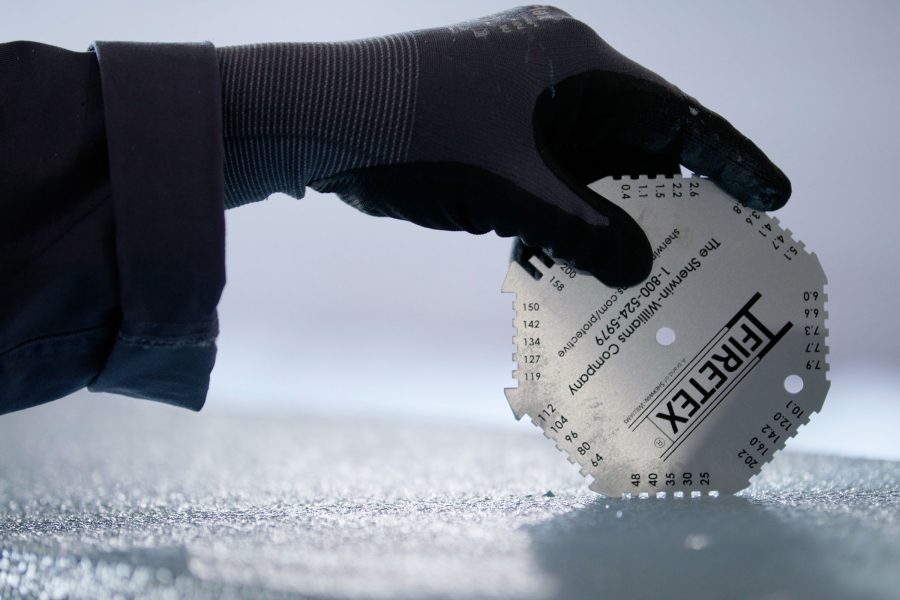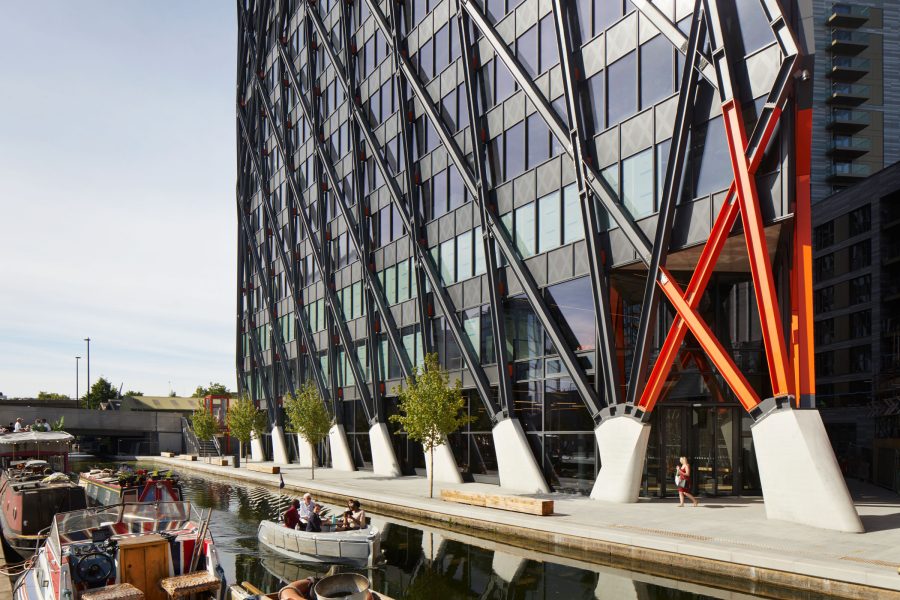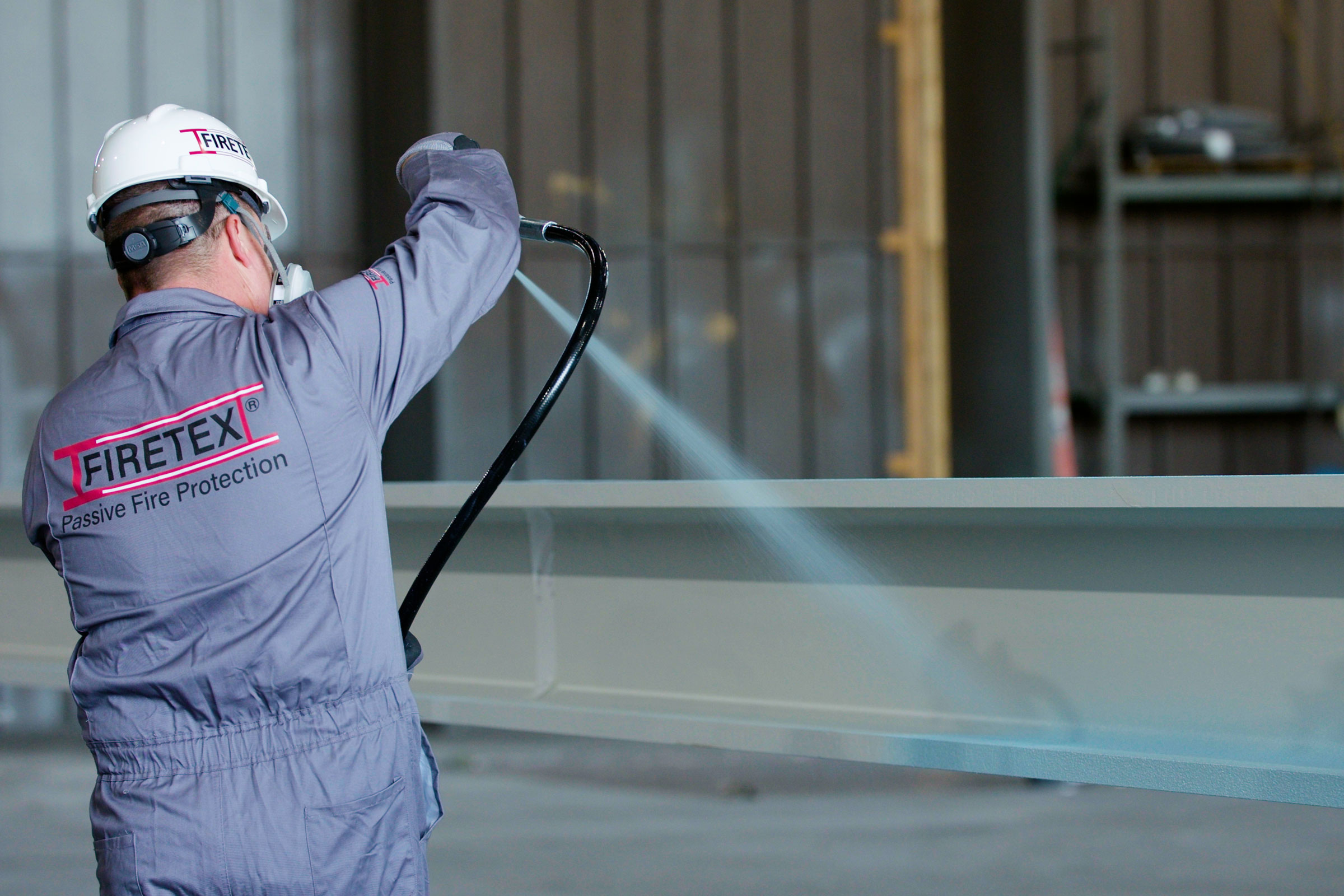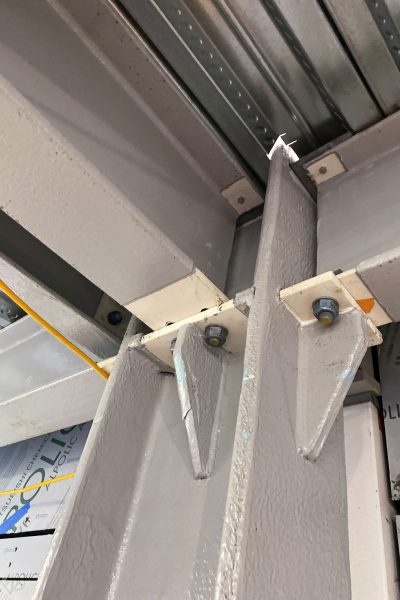Story at a glance:
- Intumescent coatings provide code-required fire protection of structural steel.
- Recent innovations at Sherwin-Williams achieve sustainability points and healthy building standards.
- A new software tool helps architects know how intumescent coatings will affect carbon equivalencies.
Architects design from outside in or inside out. And now they can give thought to the inside of the inside early in the process. Stories of star architects sketching out the contours of great buildings on a napkin over dinner with the client are legendary. Reportedly that’s the origin of the Sydney Opera House (Jørn Utzon), Guggenheim Museum New York (Frank Lloyd Wright), Walt Disney Concert Hall (Frank Gehry), and Denver International Airport (Curtis Fentress). It’s the grand inspiration of the project that prompts clients to commit to building it.
But the vast majority of the built environment, addressing important but perhaps less-glamorous needs, comes about in more pragmatic ways. Most working architects start with the program, designing structures that serve their purposes. It’s what ultimately makes the building work for the people who will occupy it.
What’s adding a layer of complexity to this are the urgent needs of sustainability and healthy buildings. The LEED certification program, among other sustainability-driven certifications, and the WELL building standard require architects to think through carbon footprints and healthy indoor air quality. No less important is maintaining structural integrity in the case of a fire, arguably a sustainability measure. When such needs are addressed early in the design process a lot more can go right in later phases.
Fire and Design

Sherwin-Williams tests topcoats used with its intumescent fire resistive products. The International Building Code requires that either UL-263 or ASTM E119 be the standard for intumescent fireproofing. Photo courtesy of Sherwin-Williams
Since the 1970s the use of intumescent coatings has replaced concrete as a means to protect structural steel in buildings. It works—as fires burn, the coatings react to heat by forming a thick, carbonaceous, insulating char layer to protect structural elements from the fire. Things still heat up, of course, but it gives sprinkler systems and fire departments more time to bring down the flames and save the building. And replacing all that concrete reduces the carbon inputs on the buildings and enables greater design latitude for architects.
Intumescent coatings currently supplied by Sherwin-Williams go beyond the initial version of the product. First, contemporary buildings are often designed with exposed structural elements as part of the aesthetic—and the design might call for something other than an institutional gray or off-white.
“This is important to architects,” says George Guanci, fire protection market segment manager for Sherwin-Williams. “If an architect requires a color, for example in a hotel lobby, we can provide a topcoat for that color.” He says the product also has no dusting or flaking that might otherwise challenge its appearance.
Sherwin-Williams tests topcoats used with its intumescent fire resistive products. The International Building Code requires that either UL-263 or ASTM E119 be the standard for intumescent fireproofing. Varying thickness requirements for intumescent fireproofing is required depending on the mass of steel, the required hourly rating, and whether the steel is used as a beam or column.
Greener Than Before
- Photo courtesy of Sherwin-Williams
- Photo courtesy of Sherwin-Williams
Intumescent coatings were once solvent-based with high VOCs, Guanci says. But Sherwin-Williams also provides water-based products with a much lower VOC level.
This matters, as more building owners and their occupants demand healthy interior environments. The WELL standard has specific requirements for VOC reduction in paints, coatings, adhesives, and sealants used in buildings. This looks at not just the content of the coating but emissions from them over time.
To satisfy LEED and other green building standards—as well as anyone concerned about climate change—Sherwin-Williams also addresses the carbon footprint of its products. It provides data in product EPDs (Environmental Product Declarations), a “cradle-to-gate” data point. But it also goes several steps beyond that with cradle-to-grave EPD data.
Architectural coatings are assessed according to Product Category Rules, or PCRs. These consider the likely lifespan of a building and when paints and coatings need to be reapplied, which is typically at around 60 years.
Knowing Data Sooner

Intumescent fire protection solutions were used on the interior and exterior of the Brunel Building in London. Photo courtesy of Sherwin-Williams
Hearkening back to the architectural design process, these are important but complex calculations to make while matters of form, function, massing, economics, context, and traffic flow are high priorities. But there is a tool that make it possible.
Guanci shares how Sherwin-Williams’ third-party verified design and estimation software, called the Fire Design Estimator, can calculate accurate quantities and thicknesses of intumescent products that will be needed in the projects. The tool looks at the precise quantity of materials, which vary in quantity and thicknesses, and factor for the carbon equivalences. With speed and efficiency the FDE can help optimize the amount of intumescent material to be used as well as how it can factor into green building credit systems.
The FDE might not be a part of those high-level napkin conversations. But once the project moves ahead to the actual architectural design phase, it’s a valuable tool for making a project greener. All while the product ensures that design and wellness goals are met.



